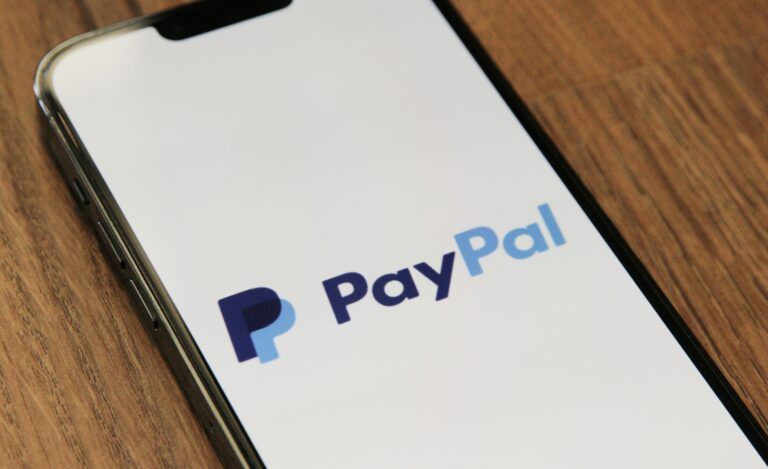As a secondary pet insurance broker or company, you understand the importance of providing comprehensive coverage options to pet owners. From accident-only plans to wellness coverage, pet parents are seeking the best pet insurance to protect their furry family members.
However, processing payments for these policies can be a challenge, as pet insurance is considered a high-risk business by many merchant account providers.
Open a Dedicated Merchant Account with DirectPayNet
The Importance of a Dedicated Secondary Pet Insurance Merchant Account
A secondary pet insurance merchant account is a specialized payment processing account designed for businesses that offer supplementary or add-on pet insurance policies. These policies are often sold alongside primary pet insurance plans to provide additional care coverage options for pet owners, such as wellness care, routine checkups, and preventative care.
Benefits of a Dedicated Account
Having a dedicated merchant account offers several key benefits. First, it allows you to streamline your payment processing and keep your primary and secondary insurance funds separate. This makes it easier to manage your cash flow, reconcile transactions, and maintain accurate financial records.
Second, a dedicated account can help you mitigate the risks associated with processing payments for a high-risk business like pet health insurance. Many traditional payment processors consider pet insurance to be high-risk due to factors such as high chargeback rates, recurring billing, and the potential for fraudulent claims. By working with a merchant account provider that specializes in high-risk businesses, you can access more flexible underwriting, higher processing volumes, and enhanced fraud protection tools.
Risks and Challenges
However, processing payments for secondary pet insurance policies comes with its own set of challenges. For example, you may face higher processing fees and reserve requirements compared to low-risk businesses. You’ll also need to navigate complex compliance requirements related to data security, privacy, and consumer protection regulations.
To overcome these challenges, it’s essential to partner with a reputable merchant account provider that has experience working with pet insurance companies. Look for a provider that offers competitive rates, robust fraud prevention tools, and responsive customer support. You should also prioritize security and compliance, ensuring that your payment processing system meets industry standards like PCI-DSS.
Steps to Get Approved for a Secondary Pet Insurance Merchant Account
Getting approved for a secondary pet insurance merchant account requires careful research and preparation. As a high-risk business, you’ll need to find a provider that specializes in working with companies like yours and can offer the support and resources you need to succeed.
Here are the key steps to take:
- Find a merchant account provider that specialize in high-risk businesses. Look for providers with experience in the pet insurance industry and a track record of success. Read reviews, ask for references, and compare pricing and contract terms to find the best fit for your business.
- Prepare necessary documentation to support your merchant account application. This may include a detailed business plan outlining your target market, marketing strategies, and growth projections. You’ll also need to provide financial statements, such as balance sheets and income statements, to demonstrate your financial stability and ability to manage risk. If you have previous payment processing history, be sure to include that as well.
- Be transparent about your business model and payment processing needs. When applying for a merchant account, it’s essential to be upfront about the nature of your business and the types of transactions you’ll be processing. Explain how your secondary pet insurance policies work, including any waiting periods, pre-existing condition exclusions, or other terms that may affect claims and payouts. The more information you can provide, the better equipped your merchant account provider will be to support your unique needs.
- Choose a provider that offers robust fraud protection and excellent customer support. As a high-risk business, you may face higher processing fees than low-risk merchants. Look for a provider that offers competitive rates and is transparent about all fees and charges. Additionally, prioritize providers with strong fraud prevention tools, such as advanced data encryption, tokenization, and chargeback management systems. Finally, choose a provider with responsive, knowledgeable customer support that can help you navigate any issues that arise.
Need fraud monitoring? DirectPayNet can help!
Best Practices for Maintaining a Smooth-Running Merchant Account
Once you’ve secured a secondary pet insurance merchant account, it’s important to implement best practices to keep your payment processing running smoothly. Here are some key strategies to focus on:
Develop a Clear and Comprehensive Pet Insurance Policy
Your pet policy should be easy to understand and cover all the essential aspects of your coverage. This includes:
- Coverage options: Clearly outline the different plans available, such as accident-only, illness, and wellness coverage. Specify which conditions and treatments are covered under each plan including each’s covered expenses.
- Pre-existing conditions and waiting periods: Define what constitutes a pre-existing condition and explain any waiting periods that apply before pet insurance coverage kicks in.
- Deductibles, reimbursements, and annual limits: Explain how monthly premiums, annual deductibles work, what percentage of costs will be reimbursed, and any annual or lifetime limits on payouts.
- Exclusions and restrictions: Be transparent about any exclusions or restrictions that apply to your policies, such as the pet’s breed or pet’s age.
Provide Exceptional Customer Service
Providing top-notch customer service helps maintain a positive reputation and reducing the risk of chargebacks and disputes.
- Respond promptly to inquiries and claims: Set up a dedicated customer service team to handle policyholder inquiries and process claims in a timely manner.
- Process payouts on time: Ensure that reimbursements and payouts are processed quickly and accurately to avoid delays and frustration for policyholders.
- Offer multi-pet discounts and incentives for new pets: Consider offering discounts for insuring multiple pets or incentives for adding a new pet to an existing policy.
- Be clear on your cancellation policy: Make it known clearly to your customers the terms of cancellation and how to go about it.
Monitor and Respond to Customer Reviews and Feedback
Online reviews and feedback can have a significant impact on your reputation and ability to attract new policyholders. Here’s what you should do:
- Address negative reviews and resolve issues promptly: Monitor review sites and social media for negative feedback and respond promptly to address any concerns or complaints.
- Encourage satisfied customers to leave positive reviews: Reach out to happy policyholders and encourage them to share their experiences online to build trust and credibility.
Regularly Review and Optimize Your Payment Processing Setup
To maintain a smooth-running merchant account, it’s important to stay on top of your payment processing setup. This means:
- Monitor for fraudulent activity and chargebacks: Use fraud detection tools and regularly review transactions to identify and prevent fraudulent activity and chargebacks.
- Keep your merchant account in good standing: Follow all the terms and conditions of your merchant account agreement and maintain open communication with your provider to avoid any issues or disruptions in service.
By implementing these best practices, you can create a positive experience for your policyholders, reduce your risk exposure, and set your secondary pet insurance business up for long-term success.
OPEN YOUR SECONDARY PET INSURANCE MERCHANT ACCOUNT TODAY
FAQ: Common Questions About Secondary Pet Insurance Merchant Accounts
What is the typical cost of a secondary pet insurance merchant account?
The cost of a secondary pet insurance merchant account can vary depending on several factors, such as your processing volume, average transaction size, and the provider you choose. Generally, high-risk merchants can expect to pay higher fees than low-risk businesses. These may include higher transaction fees, monthly account fees, and reserve requirements.
It’s essential to carefully review and compare pricing from multiple providers to find the most competitive rates. Keep in mind that the lowest price isn’t always the best option – you’ll want to balance cost with factors like service quality, reliability, and the level of support provided.
How long does it take to get approved for a merchant account?
The approval process for a secondary pet insurance merchant account can take anywhere from a few days to several weeks, depending on the complexity of your application and the provider you choose. High-risk businesses may face a more extensive underwriting process, as providers will need to carefully assess your risk profile and financial stability.
To expedite the approval process, make sure to provide all the necessary documentation upfront, including your business plan, financial statements, and processing history. The more transparent and thorough you are in your application, the faster you can expect a decision from your chosen provider.
What types of pet insurance plans can be processed through a merchant account?
A secondary pet insurance merchant account can typically process payments for a wide range of pet insurance plans, including:
- Accident-only plans (or emergency care) that cover unexpected injuries and emergencies
- Illness plans that cover the diagnosis and treatment of diseases and chronic conditions
- Wellness plans that cover routine veterinary care, such as check-ups, vaccinations, dental cleanings, and preventive treatments
- Comprehensive plans that combine accident, wellness, and illness coverage
However, it’s important to clearly communicate the specific types of plans you offer to your merchant account provider. This will help them better understand your business model and provide the appropriate level of support for your payment processing needs.
Are there any specific requirements for offering wellness coverage or routine care plans?
Offering wellness coverage or routine care plans through your secondary pet insurance program may come with additional requirements from your merchant account provider. For example, you may need to provide more detailed information about the specific services covered under these plans and how they are priced.
Additionally, because wellness plans often involve recurring payments, you’ll need to ensure that your merchant account is set up to handle subscription-based billing. This may require additional technical integrations or the use of specialized payment processing tools.
How can I ensure my policyholders’ data is secure when processing payments?
Ensuring the security of your policyholders’ sensitive data is crucial for maintaining trust and compliance with industry regulations. To protect cardholder data, your merchant account provider should offer robust security features like:
- End-to-end encryption to protect data in transit
- Tokenization to replace sensitive data with a unique identifier
- Secure storage solutions for cardholder data
- Regular security audits and compliance with standards like PCI-DSS
Additionally, you’ll want to implement best practices within your own organization, such as using strong passwords, limiting access to sensitive data, and regularly training your staff on security protocols. By prioritizing data security, you can create a safe and trustworthy payment processing environment for your policyholders.









